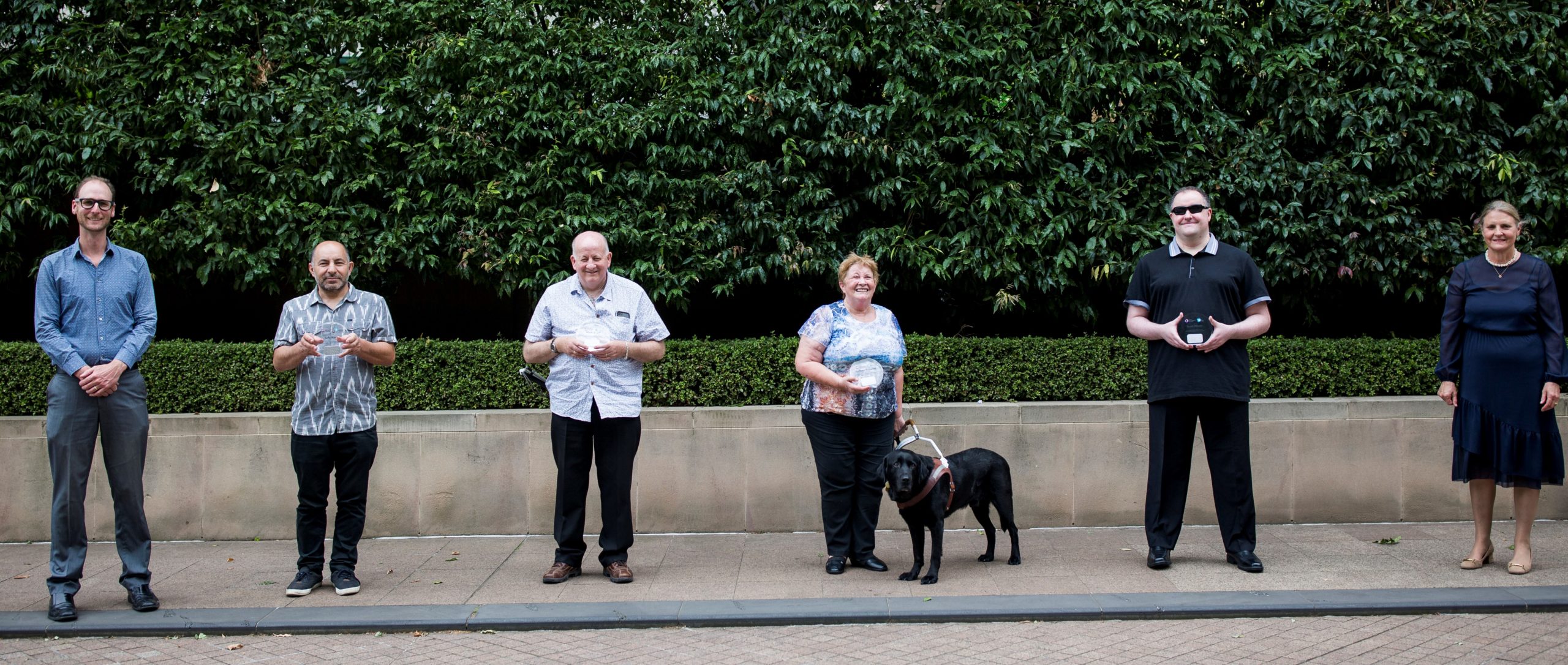This website uses cookies so that we can provide you with the best user experience possible. Cookie information is stored in your browser and performs functions such as recognising you when you return to our website and helping our team to understand which sections of the website you find most interesting and useful.
Research
Bionic eye’s vision for the future
The team developing Australia’s bionic eye have achieved a major milestone in their research.
The Australian bionic eye has captured the world’s attention after a landmark clinical trial at CERA showed that it’s capable of improving functional vision in blind patients.
A bionic eye works by stimulating visual impulses in people who have lost their sight. It gives a ‘sense of vision’ by producing flashes of light called phosphenes that can help patients detect edges, shapes and movement.
The Australian bionic eye comprises an electrode array that is inserted surgically into the eye, coupled with external components that capture images and translate them into electrical signals.
This second-generation device improves on the original prototype, trialled in 2012.
It includes a larger field of vision to improve navigation and a portable design to test the device outside the lab for the first time.
Four Victorian participants, including Mark Boyd (pictured above) took part in the rigorous two-year trial to assess the new device’s safety and whether it could produce the phosphenes that would help them navigate and locate objects.
The National Health and Medical Research Council and commercial partner Bionic Vision Technologies (BVT) funded the trial.
All participants have severe vision impairment from an inherited eye disease called retinitis pigmentosa.
Patients with this condition are perfect candidates for a bionic eye. While they have lost the cells that produce sight, they still have nerve tissue that can be stimulated to produce visual impulses.
For the trial volunteers, participation was largely altruistic – a chance to contribute to a better future for other people who have lost vision from retinitis pigmentosa.
Making history
“I saw being involved as a history-making opportunity for vision impaired people,” says participant Colleen Knowles.
Before the trial, participants could only perceive light and dark. They could not detect objects and hadn’t been able to navigate independently for at least 15 years.
But after several months of training to learn how to interpret the electrical signals from the bionic eye, all four could perceive – and navigate – the world around them.
“The first time we went outside I actually got a shock to know that there were so many trees on the nature strip!” says Colleen. “I’ve now become a people watcher. I’m checking things out all the time.
“It’s been amazing to navigate around certain objects and find something on the table instead of knocking it over and breaking it.”
Enriching lives
The bionic eye trial showed that it was safe and enriched the patients’ lives in many ways.
One gained more enjoyment from live theatre because he could gauge people’s location.
Another could more easily locate tools and machinery in woodwork class.
Increased motivation, feeling more energetic and positive, and a greater sense of belonging in a gathering were other positive outcomes described by participants.
Associate Professor Penny Allen, CERA’s Principal Investigator on the Bionic Eye Project acknowledges the “huge collaborative effort” it took to produce these ground-breaking results but credits the participants’ dedication as a key factor.
“We are so grateful for the support they have provided,” she says.
Where to next
In late 2020, BVT received $1 million funding from the Medical Research Future Fund to further develop the device’s visual processing.
Learnings from this important clinical trial will be used by BVT for the next phase of bringing the bionic eye to more people with blindness.


